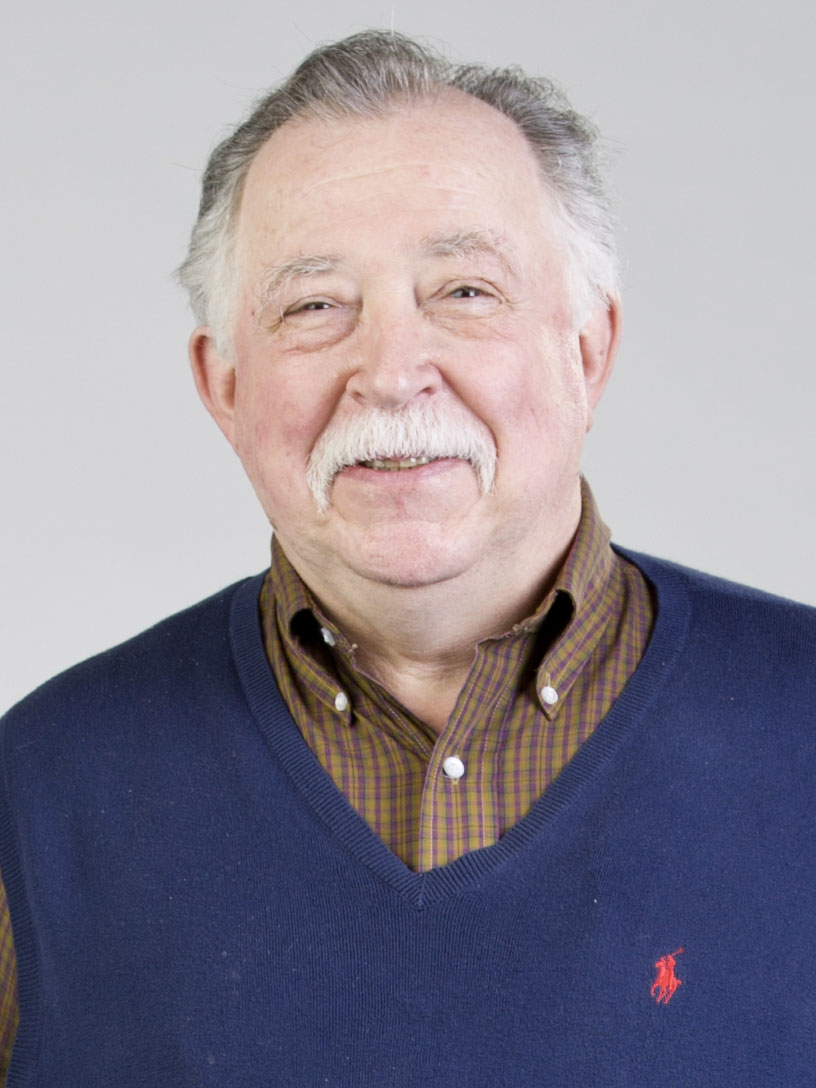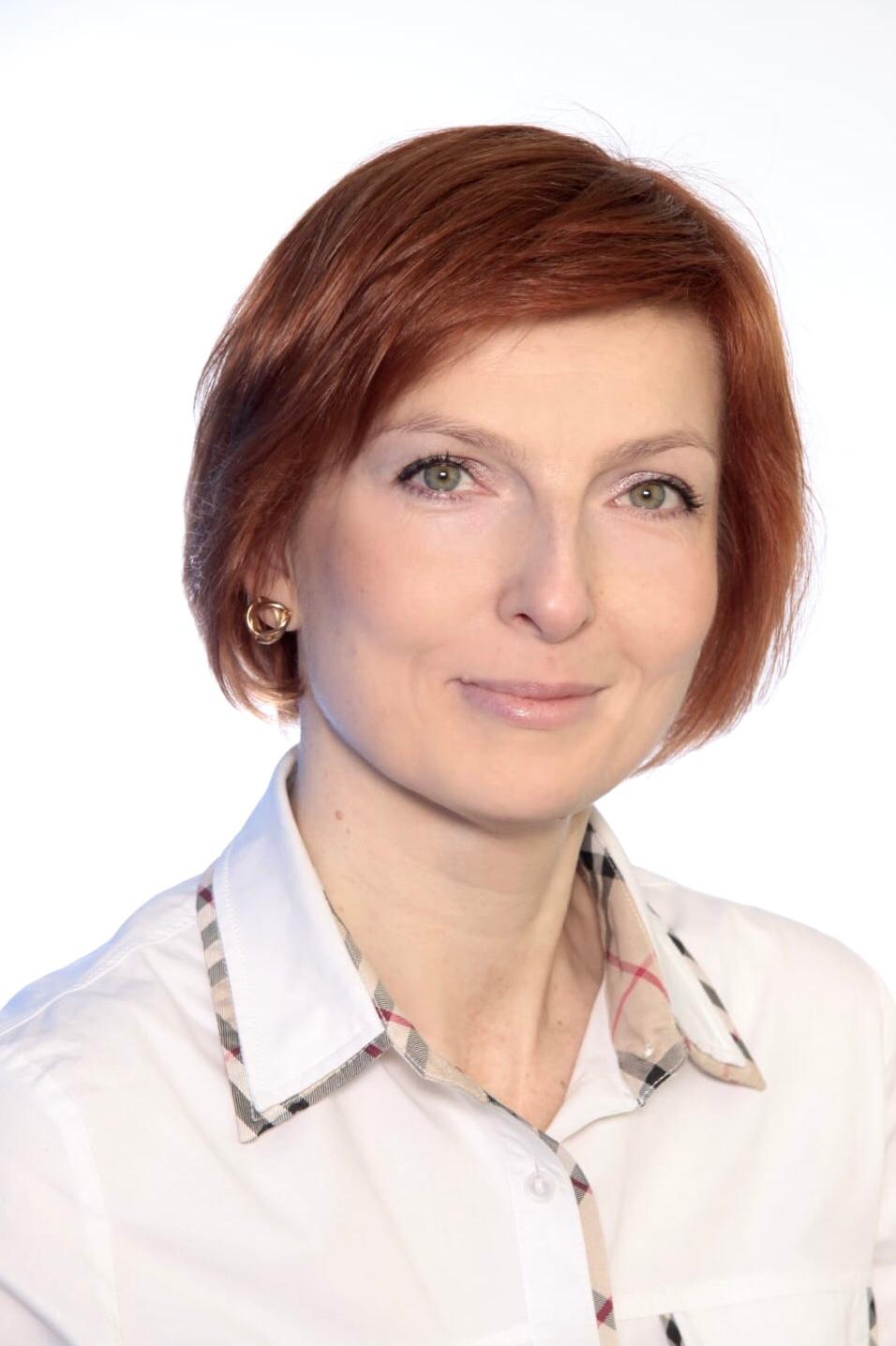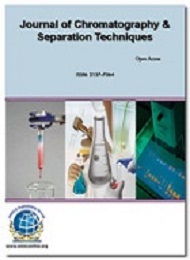Theme: Exploring the Scientific and Industrial Advancements in Chromatography Techniques
Chromatography Techniques-2022
Chromatography Techniques-2022 cordially invites the logical moxie, experimenters, professors, scientific communities, delegates, scholars, business professionals, and directors to attend the “11th World Congress on Chromatography”, which is to going be held during May 24-25, 2022.
In the light of this theme, the conference series aims to give a forum for transnational experimenters from colorful areas of logical chemistry, drugstore, pharmacology, bioinformatics, and other life wisdom groups by furnishing a platform for critical analysis of new data, and to partake rearmost slice- edge exploration findings and results about all aspects regarding advances in HPLC and Chromatography ways.
The conference provides a platform to detail the exploration workshop of logical moxie from colorful scientific backgrounds and the same can be perceived by youthful experimenters and scholars. The conference substantially aims to enunciate knowledge on chromatography and unveil the advances in HPLC ways. Both Life Lores and Chemical Lores need logical ways by course of exploration work and thus Chromatography Techniques-2022 would be a perfect venue to partake and develop knowledge on crucial logical tools
- Analytical experts in chromatography
- Research Heads from Research Centres
- Leads from Pharmacy and Chemical Industries
- Industrial expertise working with various novel solid & liquid columns
- Marketing teams of Industries with novel products to show case at the conference
- Directors and Professors from Universities and Institutions
- Post-doctoral & PhD students working on analytical & Bio-analytical method development
- Theoretical scientists working on deriving analytical hypotheses
- Relevant Graduate and Post graduate students
Chromatography Techniques-2022 will provide an opportunity and platform to detail the research works of analytical expertise from various scientific backgrounds and the same can be perceived by young researchers and students. The conference mainly aims to promulgate knowledge on chromatography and unveil the advances in Chromatography techniques. Both life sciences and chemical sciences need analytical techniques in course of research work and therefore Chromatography Techniques-2022 would be a perfect venue to share and develop knowledge on key analytical tools.
Chromatography Techniques-2022 will congregate renowned speakers, industrial experts and researchers from both academia and Pharmaceutical industry will join together to discuss their views and research. The conference will be comprised of sessions by world class experts in the field of chromatography and separation technology. In Chromatography Techniques-2022, international symposiums, B2B meetings, international workshops will also be organized to discuss the specific topics in the field of Chromatography and Chemistry.
A Unique Opportunity for Advertisers and Sponsors at this International event.
Global Chromatography and HPLC Associations
- American Chemical Society
- American Organization of Analytical Chemists International (AOAC)
- American Society for Mass Spectrometry
- An International Separation Science Society
- Association of Analytical Communities (AOAC) International
- Association of Separation Scientists and Technologists
- Australian and New Zealand Society for Mass Spectrometry
- Austrian Society for Analytical Chemistry
- California Separation Science Society (CaSSS)
- Canadian Society for Analytical Sciences
- Chinese American Chromatography Association (CACA)
- Chromatographic Society of India (CSI)
- Cooperation on International Traceability in Analytical Chemistry (CITAC)
- International Council of Chemical Associations
- Mendeleev Russian Chemical Society
- Royal Australian Chemical Institute
- Royal Society of Chemistry
- Society for Applied Spectroscopy
- Society for Chromatographic Sciences (SCS, Japan)
- South African Chromatography Society (ChromSA)
- The International Association for the Advancement of High Performance Thin Layer Chromatography (HPTLC Association)
- The Japan Society for Analytical Chemistry (JSAC)
Major Associations in Europe
- British Mass Spectroscopic Society
- ChromSoc-The Chromatographic Society
- Czech Chemical Society
- European Association for Chemical and Molecular Sciences (EuCheMS)
- European Federation for Pharmaceutical Sciences
- European Society for Separation Science
- Italian Chemical Society
- Royal Netherlands Chemical Society
- Swedish Mass Spectrometry Society
- The Israeli Society for Mass Spectrometry – ISMS
Chromatography is used extensively in all areas of chemical analysis from typical biological compounds to those in polluted environment. The technique is extensively used by the pharmaceutical industry for both research purposes and for quality control. Similarly, the biochemical and biotechnology industries widely use chromatographic techniques and in many cases alternative methods are not available. Since its invention, chromatography has become a key tool for separation, identification, purification and quantification of several compounds. Chromatography is under constant development owing to the growing research needs in academic and industrial levels. This has led to the combination of HPLC with other spectroscopic techniques like NMR, MS, GC, IC, SE and MALDI. Hyphenated HPLC techniques are now more investigated and used to combine the efficiency of more than one technique.
High Performance Liquid Chromatography (HPLC) is the most popular analytical technique for a wide variety of samples from typical biological compounds to those in polluted environment. HPLC is unique because of its features like pressure stable column, constant and high linear velocity of mobile phase and most important densely packed column with reduced particle size, less than 10µm (less than 2µm in UHPLC) .
Chromatography Techniques-2022 is an international platform for presenting research about separation techniques and related fields thus contributes to the dissemination of knowledge for the benefit of both the academia and business. This event brings together the top professionals in the field along with the highly affiliated professors to explore the advancements and latest applications achieved in the field of chromatography. Chromatography Techniques-2022 discusses various fields of analytical chemistry employed in theoretical, organic, inorganic, pharmaceutical and life science fields which mark the support for the advanced and much needed research by their study on various topics. The scientific program will focus on current advances in the research and use of chromatography and related with particular focus on its roles and applications in various fields.
Market Summary:
The enormous market of chromatography instrumentation includes chromatography systems like TLC, HPLC, UPLC etc. and chromatography consumables like filters, columns, solvents etc. The international life science and chemical instrumentation market is expected to increase at CAGR of 6.9% reaching $48.84 billion by 2020. Increasing government investments in pharmaceutical R&D in emerging nations, technological advancements in the analytical instruments, growing food safety concerns, increasing life science research and development expenditure, and progressing drug discovery and clinical diagnostics field are the key factors driving the growth of life science and chemical instrumentation market. Additionally, the key factors offering new growth opportunities for the market players include rising environmental safety concerns, growing proteomics market and increasing demand of analytical instruments from applied markets. The Europe Liquid Chromatography Reagents market is determined to grow at a CAGR of 9.9% from 2014 to 2020. The market growth is stimulated by extensive use of chromatographic techniques in every minute analysis
The global chromatography request is read to grow at a CAGR of nearly 7 during 2020-2023, and the request size will increase by USD4.75 billion during the cast period of 2020-2023. In between 2020-2023, the chromatography request will grow at a faster pace than the overall request growth in 2022. The growth instigation of the chromatography request is anticipated to accelerate in the alternate half of the cast period compared to the increase in the first half.
The chromatography request is concentrated, and the degree of attention is anticipated to drop by 2023. An outlook of accelerating growth would give openings to all request actors to grow. Request actors should concentrate on the openings on the demand side rather than getting exorbitantly impacted by the competitive dynamics. The accelerating growth instigation will be one of the contributing factors moderating the competitive intensity in the request over the cast period.
Life wisdom was the largest member of the overall request in 2022 and will continue to remain so in 2023. The growth rate of the life wisdom member will be faster than the global request growth during the cast period 2022-2023. Still, the growth rate of the exploration and other parts will be slower than the overall request growth.
To identify growth openings in the chromatography request, the request has been segmented into regions that are growing more briskly than the overall request. These regions have been leveled against regions that have a slower growth rate than the global request in 2022-2023. Asia will grow faster than the overall request. Request growth in Europe, North America, and ROW will be slower than the global request.
Global chromatography assiduity overview
Movable laboratory systems similar to movable gas chromatography are being preferred over conventional systems because of their capability to give real-time, direct, and onsite measures of organic and inorganic analytes in a sample. With the rising demand for rapid-fire, high-quality analysis on-point, the demand for movable logical systems will increase during the cast period, boosting the growth of the chromatography request.
Chromatography request segmentation grounded on end- druggies
• Life wisdom
• Research
• Others
The life wisdom member will regard for the loftiest chromatography request share. The adding demand for pharmaceutical medicines and medicine delivery technologies and the rising investments in R&D will drive the demand for chromatography from the life lores assiduity.
Chromatography request segmentation grounded on geographic region
• Asia
• Europe
• North America
• ROW
With a complete study of the growth openings for companies, it has been linked that North America will regard for the loftiest chromatography request share throughout the cast period. The growing focus on medicine and vaccine discovery and development and the recent advancements in biotechnology and pharmaceutical exploration are some of the significant factors responsible for chromatography request growth in this region.
Track 1:- Major Chromatographic Techniques:
Chromatography principally is a system of separation of composites from an admixture. The fashion is both logical and preliminary and is employed extensively in diligence as well as in laboratories. Chemical analysis is substantially done all over the world with chromatography or any other colorful ways related to chromatography. Chromatography is a physical fashion and has a vast operation in the chemical field starting from introductory logical chemistry to forensic wisdom.
Some major chromatography ways are:
Column chromatography is a system used to purify individual chemical composites from fusions of composites. It has preliminary operations on scales ranging from small-scale to large-scale products. Fairly low cost and disposability of the stationary phase are the main advantages of column chromatography.
Paper chromatography involves placing a small fleck or line of sample results onto a strip of polar cellulose chromatography paper. The paper is placed in a glass chamber with a shallow subcase of detergent and is sealed. As the solvent moves through the paper, it comes in contact with the sample admixture, which starts to rise up the paper with the detergent.
Thin-subcase chromatography (TLC) is a substance used fashion that involves a stationary phase of a thin subcase of adsorbents like alumina, silica gel, or cellulose on a flat, inert subcase of the substrate. Advantages of TLC are more separations, faster runs, and the choice of different adsorbents. More quantification and resolution can be achieved with high-performance TLC.
Relegation chromatography is a preliminary fashion in which a sample is placed onto the head of the column and is also displaced by a solute that's further explosively adsorbed than the factors of the original admixture. As a result, the factors are resolved into successive blockish zones of largely concentrated pure substances rather than solvent-promised peaks.
Gas chromatography (GC) is generally used in logical chemistry for separating and assaying composites that can be wracked without corruption. In this process, the mobile phase (or" moving phase") is a carrier gas; generally, an inert gas similar to helium or an unreactive gas similar to nitrogen is generally used. The stationary phase is a bitsy subcase of liquid or polymer on an inert solid support, within a glass or essence tubing.
Supercritical fluid chromatography (SFC) – in this fashion the mobile phase is fluid over and fairly close to its critical temperature and pressure. SFC substantially utilizes carbon dioxide as the mobile phase; in order to pressurize the chromatographic inflow. The supercritical phase represents a state in which liquid and gas parcels combine.
Expanded Bed Adsorption Chromatographic Separation (EBA) is used for target protein from a raw feed sluice when it passes through a chromatography column system containing adsorbent globules. Using this fashion the undressed raw emulsion can be treated directly in the chromatographic column, avoiding explanation and-treatment way.
Track 2:- Advances in Chromatography Instrumentations:
HPLC is a popular system of analysis for natural products because of its high delicacy, perfection and isn't differed by the stability or the volatility of the composites. HPLC combined with diode array sensor (HPLC- Pater), mass spectrometer (HPLC-MS) has been successfully employed for the qualitative and quantitative determination of colorful types of Phyto-ingredients like alkaloids, glycosides, tannins, tri-terpenes, flavonoids, etc. HPLC styles are used readily for the determination of medicines in natural fluids and pharmaceutical lozenge forms. HPLC determination with spectroscopic discovery is useful for routine quality control of medicines in pharmaceutical lozenge forms and stability studies.
A chromatographic sensor is able of establishing both the identity and attention of eluting factors in the mobile phase sluice. A broad range of sensors is available to meet different sample conditions. Sensors respond to a particular emulsion only and the response is independent of mobile phase composition the response of bulk property sensors is dependent on collaborative changes in the composition of sample and mobile phase. Specific sensors are UV-VIS, Photodiode array, luminescence, and mass spectroscopic sensors. Bulk Property sensors include refractive indicators, electrochemical and light scattering sensors.
Track 3:- Chromatography-Mass Spectroscopy Analysis:
Liquid chromatography is an abecedarian separation fashion in the life lores and related fields of chemistry. Unlike gas chromatography, which is infelicitous for non-volatile and thermally fragile motes, liquid chromatography can safely separate a veritably wide range of organic composites, from small-patch medicine metabolites to peptides and proteins. Traditional sensors for liquid chromatography include a refractive indicator, electrochemical, luminescence, and ultraviolet-visible (UV-Vis) sensors. Some of these induce two-dimensional data; that is, data representing signal strength as a function of time. Others, including luminescence and diode array UV-Vis sensors, induce three-dimensional data. Three-dimensional data include not only signal strength but spectral data for each point in time.
Mass spectrometers also induce three-dimensional data. In addition, to signal strength, they induce mass spectral data that can give precious information about the molecular weight, structure, identity, volume, and chastity of a sample. Mass spectral data add particularity that increases confidence in the results of both qualitative and quantitative analyses.
Track 4:- Chromatography in Pharmacy & Pharmaceutical:
One of the most characteristic features of the development in the methodology of medicinal and biomedical analysis is that HPLC came really the most important logical system for identification and quantification of medicines, either in their active pharmaceutical component or in their phrasings during the process of their discovery, development, and manufacturing.
Medicine development starts with the discovery of a patch with a remedial value. This can be done by high outturn webbing during which separations by fast or ultra-fast HPLC are performed. At the discovery stage, there can be also characterizing synthetic or natural products. Medicine metabolism and pharmacokinetics (DMPK) is the step where the seeker composites for medicine are tested for their metabolism and pharmacokinetics. The studies involve the use of LC-MS or LC-MS/MS. The thing in the discovery stage of medicine development is to discover a new, safe and active chemical reality (NCE) that will come as a drug for conditions. During the last decade parallel conflation of implicit lead composites, using combinatorial chemistry has been done. Due to its high perceptivity and selectivity, HPLC coupled with tandem mass spectrometry, HPLC-MS/ MS has come the predominant system in bioassays and pharmacokinetic and metabolic studies.
Chromatography and spectroscopy are orthogonal ways, i.e. their types of information are veritably different and are specific. Chromatography is a separation system and spectroscopy is a fashion that yields a ‘point of an individual or from an admixture of motes. HPLC is a fashion for the separation, quantification, and identification of factors in an admixture. It's especially suitable for composites that aren't fluently volatilized, thermally unstable, and have high molecular weights. The advantage of the UV system over the HPLC system is that the UV system doesn't bear the elaborate treatment and procedures generally associated with the chromatographic system. It's lower time-consuming and provident. The HPLC and UV spectrometry styles are acceptable styles to quantify a medicine in pure form and its lozenge form. Since these styles are simple, specific, rapid-fire, precise, and accurate, they may be successfully and accessibly espoused for routine quality control analysis of medicines in the bulk and pharmaceutical lozenge form.
Track 5:- Chromatography in Food Science Technology:
With the ultramodern technology and installations, our food force is more different and more largely reused than ever ahead. To ensure the safety and nutritive quality of our food numerous countries and associations have announced regulations that stipulate respectable situations for individual chemical complements, remainders, and pollutants in food products. Other regulations bear food packaging to list constituents relating to nutritive content, similar as preservatives, artificial chemicals, unsaturated and logged fat. Food manufacturers and processors themselves must be suitable to assess product quality. Meeting all of these conditions is the function of food analysis.
Decreasingly, food analysis styles are erected around grandly-performance liquid chromatography (HPLC), which has proven to be an optimal technology for detecting and/ or quantifying the vast maturity of food analytes. These styles employ an accretive approach while separating and assaying the sample; it first removes the sample matrix, also isolates the analytes of interest, and collectively resolves them on a chromatographic column. The effectiveness of the separation depends on, among other effects, the discrimination commerce of analytes of interest with both mobile and column stationary phases during the separation. It's important to classify food analytes according to their relative volatility and opposition are factors that must be considered when opting for an applicable logical system for their determination.
Gas chromatography (GC) is extensively used in operations involving food analysis. High-performance liquid chromatography (HPLC) and to mention state-of-the-art GC ways used in the major operations pertaining to the quantitative and/ or qualitative analysis of food composition, natural products, food complements, flavor and aroma factors, a variety of metamorphosis products, and pollutants, similar as environmental adulterants, fungicides, fumigants, natural poisons, veterinary medicines, and packaging accouterments. Among the several new qualitative and quantitative ways being developed in food analysis operations, presto-GC/ mass spectrometry (MS) will have the most impact in the coming decade. Three approaches to gormandize-GC/ MS include low-pressure GC/ MS, GC/ time-of-flight (TOF)-MS, and GC/ supersonic molecular ray (SMB)-MS.
Track 6:- Biochemical Applications of Chromatography:
HPLC is a veritably common system for metabolomics analysis. HPLC has a lower chromatographic resolution, requires no derivate for polar motes, and separates motes in the liquid phase. HPLC has the advantage of an important wider range of analytes measures with an advanced perceptivity than gas chromatographic styles. Applicable to proteomics, due to the complex structure and nature of proteins, instrumentation and styles development for sample clean-up, pre-concentration, separation, chromatographic separation, and the discovery become an immediate demand for the identification of peptides and proteins. Rearmost ways and outfits for separation and discovery include nano-HPLC and multidimensional HPLC for protein and peptide separation. HPLC is considered as utmost dependable and utmost sensitive fashion in genomics used to determine DNA methylation. The nucleosides and nucleotides of DNA are separated and quantified by the HPLC-UV system. HPLC finds operations in glycomics and lipidomics where the glycan part is adhered either enzymatically or chemically from the target and subordinated to analysis. HPLC has a wide operation in lipidomics to separate lipids previous to mass spectrometry. Separation can be achieved by either rear-phase (RP) HPLC or normal-phase (NP) HPLC.
Track 7:- HPLC Fingerprinting in Bioinformatics & Computational Biology:
HPLC ways are applied for the sanctification and separation of colorful natural samples. The anatomized samples are subordinated to sequencing studies either manually or using different software. This is studied as data mining and sequence analysis. HPLC is also used for the characterization of colorful metabolites.
Characteristic is a quality control model that builds upon spectroscopic and chromatographic technology. It's different from the traditional quality control model in the sense that characteristic looks at the “complete information” or comprehensiveness of the chromatograph, and displays integrated quality information. Since the secondary metabolites, which are chemical factors of medicinal sauces, are innately unstable, the fingerprints of these chemicals retain a fuzziness that cannot be precisely measured, just like the fuzzy miracle in our diurnal lives. Comprehensiveness and fuzziness are the two introductory traits of a point. The similarity of fingerprints is established through these introductory traits. Point analysis focuses on accurate identification (of analogous peaks), and not on precise computation. The comparison of fingerprints emphasizes similarity and the fingerprints compared don't need to be exactly the same. When it's insolvable to find out all the complex factors of traditional drugs, fingerprints can be used to check the stability of the natural quality of the drug.
Track 8:- Analytical & Bio-analytical Applications of Chromatography:
HPLC can be used in both qualitative and quantitative operations that are for both emulsion quantification and identification. Normal phase HPLC is infrequently used now, nearly all HPLC separation can be performed in the rear phase. Rear-phase HPLC (RPLC) is ineffective for only many separation types. HPLC is applied for molecular weight determination, in logical chemistry, medicinal and medicine wisdom, clinical lores, food technology, consumer products, combinatorial chemistry, polymer chemistry, environmental chemistry, and green chemistry.
Track 9:- Chromatography in Bio-Medical Research:
HPLC is the most protean of all chromatography styles but also the most complex. It was first made available in the laboratory during the 1970s and is presently used for the analysis of amino acids, peptides, proteins, carbohydrates, lipids, nucleic acids, and related composites, vitamins, hormones, metabolites, and medicines. HPLC can be coupled to colorful sensors similar to UV, luminescence, or mass spectrometry (LC/ MS and LC/ MS/ MS) and is routinely used for quantitative analysis in natural samples similar to blood, urine, and other body fluids. HPLC consists of using a liquid mobile phase to pass beneath high pressure an admixture of analytes uprooted from the sample through a column containing the stationary phase. Analyte separation is grounded on differences in commerce with both the mobile phase and the stationary phase.
HPLC is a proven system for segregating analytes of interest in complex matrices similar to natural fluids. Its use in the clinical laboratory has steadily increased over the once decades as its unmatched logical performance and versatility allow for the testing of numerous different types of clinically applicable analytes. With the recent advances in discovery technology similar to mass spectrometry and sample medication ways similar to asbio-affinity chromatography and online robotization, HPLC- grounded styles will probably remain the gold standard of clinical testing for numerous of the current but also unborn biomarkers and remedial medicines.
Track 10:- Hyphenated Chromatography Methods:
The hyphenated fashion is developed from the coupling of a separation fashion and an online spectroscopic discovery technology. Several remarkable advancements in hyphenated logical styles over the last two decades have significantly broadened their operations in the analysis of biomaterials, especially natural products, pre-isolation analyses of crude excerpts or fragments from colorful natural sources, insulation, and discovery of natural products, chemical characteristic, testing of herbal products,de-replication of natural products, and metabolomics. Rapid identification and characterization of known and new natural products directly from the factory and marine sources without the necessity of insulation and sanctification can be achieved by colorful ultramodern hyphenated ways. Ways like HPLC coupled to NMR (Nuclear Glamorous Resonance) or electrospray ionization tandem mass spectrometry (ESI-MS-MS) have been proven to be extremely important tools in natural product analysis, as they prop in the fast webbing of crude natural product excerpts or fragments for detailed information about metabolic biographies, with a minimal volume of material. Hyphenated HPLC ways include HPLC-MS, HPLC-ESI-MS, HPLC-IC-MS, HPLC-NMR-MS, HPLC- Pater, HPLC-CE-MS, HPLC-UV, Coupling LC, and MALDI-TOF.
Track 11:- Chromatography as Separation Techniques:
High-Performance Liquid Chromatography (HPLC) is the anon-destructive procedure for resolving a complex admixture into its individual fragments or composites. It's grounded on the discriminational migration of solutes with the detergents. Those solutes with a high affinity for the mobile phase will spend further time in this phase than the solutes that prefer the stationary phase. As the solute rises up through the stationary phase they separate. The process is called chromatographic development. The bit with lesser affinity to stationary subcaste peregrination slower and shorter distance while that with lower affinity peregrination briskly and longer.
Normal-phase chromatography, the stationary phase is polar and the mobile phase is nonpolar. In the reversed-phase the stationary phase is nonpolar and the mobile phase is a polar.
Flash Column Chromatography (FCC) or Flash Chromatography is the quickest and the easiest way to separate complex fusions of composites. It uses compressed air to push the detergent through the column. This provides better separation and reduces the quantum of time needed to run a column.
Ion exchange chromatography (IEC) uses an ion exchange medium to separate analytes grounded on charge difference. It's performed in columns but can also be useful in planar mode. It uses a charged stationary phase to separate composites including cations, anions, amino acids, proteins, lipids, and peptides. Lading samples in buffers of low ionic strength makes ion-exchange chromatography is an excellent sanctification step after HIC.
Affinity chromatography is grounded on picky-covalent commerce between an analyte and sample motes. It's a largely specific, but not robust system. It's used in biochemistry in the sanctification of proteins bound to markers. Fusion proteins are labeled with composites similar to antigens or biotin which binds to the stationary phase specifically. Latterly after sanctification, some of these markers are removed and the pure protein is attained. Paralyzed Metal Affinity Chromatography is used to separate motes grounded on the relative affinity for the essence. Frequently these columns can be loaded with different essence to produce a column with a targeted affinity.
Chiral chromatography includes the separation of stereoisomers. Enantiomers have no chemical or physical differences piecemeal from being three-dimensional glass images. For chiral separations to be, either the mobile phase or the stationary phase must themselves be made chiral by converting different affections between the analytes.
Size-rejection chromatography (SEC) also known as gel filtration chromatography, separates motes according to the size or further directly according to the hydrodynamic periphery or the hydrodynamic volume. Small motes enter the pores of the media where they're trapped and removed from the inflow of the mobile phase. Mean hearthstone time in the pores depends upon the effective size of the analyte motes. It's a low- resolution chromatography fashion and therefore it's used for determining the tertiary structure and quaternary structure of purified proteins.
Track 12:- High Efficiency & High Resolution Techniques:
UHPLC (Ultra-HPLC) or UPLC (Ultra Performance Liquid Chromatography) is now being espoused in artificial labs, especially the pharmaceutical assiduity due to its high speed, high resolution, and solvent saving. A UHPLC system uses an Asus-2micron column as it reduces the analysis time by 80 and saves the mobile phase consumption by a huge quantum compared to the conventional HPLC. In addition, the important shorter run time significantly reduces UHPLC system development gibing time. HPLC system development principles can be applied to UHPLC system development. Micro and Nano HPLC ensure high situations of inflow rate inflexibility and reproducibility.
Hydrophilic commerce chromatography or hydrophilic commerce liquid chromatography (HILIC) is a variant of normal phase liquid chromatography that incompletely overlaps with other chromatographic operations similar as ion chromatography and reversed- phase liquid chromatography. It uses hydrophilic stationary phases with reversed-phase type eluents.
Track 13:- Method Development & Validation:
Quality can be designed to process through the methodical perpetration of an optimization strategy to establish a thorough understanding of the response of the system quality to given variables, and the use of control strategies to ensure quality. The conception of system development includes modeling of the influence of values of variables on quality, design of trials, and simplification of processes as information is collected. The extension of QbD (Quality by Design) doctrines is now applied to the development of manufacturing processes and logical styles. The capability of a chromatographic system to successfully separate, identify and quantitate species is determined by an important factor called experimental design. Robotization of a process is one of the keys to adding the productivity of an exploration group.
Track 14:- Recent Advances in Chromatography:
The HPLC methodology applied to the analysis of biological samples makes it possible for the identification of many metabolites. Samples from two human embryos culture medium were analyzed by the high-pressure liquid chromatography–mass spectrometry (HPLC–MS). They work on the principle that many microorganisms have their own unique mass spectral signature based on the particular proteins and peptides that are present in the cells. Identification of unknown peaks in gas chromatography (GC-MS)-based discovery metabolomics is challenging, and remains necessary to permit discovery of novel or unexpected metabolites that may allergic diseases processes and/or further our understanding of how genotypes relate to phenotypes. Here, we introduce two new technologies and advances in pharmaceutical analytical methods that can facilitate the identification of unknown peaks.
Track 15:- Chip Based Chromatography Separations:
This includes a microfabricated separation device. The vacuity of the fused-silica capillary marked a significant advance for gas chromatography and all gas chromatographs manufactured were equipped to use fused silica capillary columns. Fused silica capillaries have a huge donation to the developments of other micro separation technologies like supercritical fluid chromatography. The success of one separation fashion relies on sample preface technologies, separation columns, and sensitive sensors that can save chromatographic dedication of high-resolution chromatographic peaks, as is apparent from the numerous injectors and sensors optimized and available for open tubular GC. A flyspeck-packed column is comprised of a Nanoliter enrichment column and a micron or sub-micron separation column packed with a suitable grade of C18. The HPLC- Chip is made from a biocompatible polyimide and the functionality of this chip is original to conventional Nano spray LC/MS. Sepultures correspond to a single rod of pervious material with several unique features in terms of permeability and effectiveness. Micro-fabricated columns grounded on pillar arrays were formed by arrays of porous silicon pillars with a periphery of roughly4.3 μm. The pillars were covalently carpeted with a monolayer of hydrophobic C8- chains to enable reversed-phase LC separations.
Track 16:- Market Growth of Chromatography:
The global chromatography instrumentation request is segmented on the basis of systems, consumables, operations, and regions. The report studies the global chromatography instruments request for the cast period of 2015 to 2020. The request is anticipated to reach USD9.223 Billion by 2020 from USD7.062 Billion in 2015, at a CAGR of5.5.
It's anticipated that North America and Europe will continue to lead the request over the coming five times; the chromatography request in Asia will expand and increase its request share. The motorists behind the expansion are two-fold first the expansion of original companies in Asia and secondly, Western Pharma outsourcing its exploration and manufacturing operations to Asia, particularly China and India.
Conference Highlights
- Major Chromatographic Techniques
- Advances in Chromatography Instrumentations
- Analytical & Bio-analytical Applications of Chromatography
- Chromatography in Food Science Technology
- Biochemical Applications of Chromatography
- Chromatography in Pharmacy & Pharmaceutical
- HPLC Fingerprinting in Bioinformatics & Computational Biology
- Chromatography & Mass Spectrometry
- Chromatography in Bio-Medical Research
- Hyphenated Chromatography Methods
- Chromatography as Separation Technique
- High Efficiency & High Resolution Techniques
- Method Development & Validation
- Recent Advances in Chromatography
- Chip Based Chromatography Separations
- Market growth of Chromatography
- Chromatography in Environmental Sciences
To share your views and research, please click here to register for the Conference.
To Collaborate Scientific Professionals around the World
| Conference Date | August 22-23, 2022 | ||
| Sponsors & Exhibitors |
|
||
| Speaker Opportunity Closed | |||
| Poster Opportunity Closed | Click Here to View | ||
Useful Links
Special Issues
All accepted abstracts will be published in respective Our International Journals.
- Journal of Analytical & Bioanalytical Techniques
- Journal of Chromatography & Separation Techniques
- Journal of Molecular Biomarkers & Diagnosis
Abstracts will be provided with Digital Object Identifier by
















